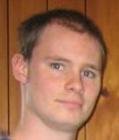IRS makes mistake.

CHIMACUM, Wash. (AP) - Brian Lawson, a self-employed market analyst, and his wife Jackie got both more and less than they expected when they ordered an Internal Revenue Service instruction booklet by telephone.
What the Lawsons wanted was a single copy of the Form 1040 instructions for 2003 to help fix them a numerical error on their returns that has resulted in them having to pay $300 a month in back taxes since they filed their return for that year.
What they got on Wednesday evening, three weeks after their call, was a UPS Inc. delivery of 12 boxes containing 2,000 copies each - 24,000 booklets in all - of the Form 1040 instructions for 2005.
The wrong booklets were sent from Bloomington, Ill., and arrived at the right place despite being addressed to Chimacum, D.C., instead of Chimacum, Wash.
"We're hoping they'll be more understanding of our error since they made this big error," Lawson told the Peninsula Daily News of Port Angeles on Thursday.
He said he was unable to get the IRS to return his calls, and the newspaper also was unable to get a return call from the agency's media relations office in Seattle.
Lawson did get one call about the booklets, though.
About 4:30 p.m. Thursday, a UPS employee called to say another 12 boxes addressed to him and containing 24,000 more booklets had just arrived at a warehouse.
Lawson told her not to bother delivering them.
He said he and his wife had learned one lesson from the episode: "We should have had someone else do our taxes."







